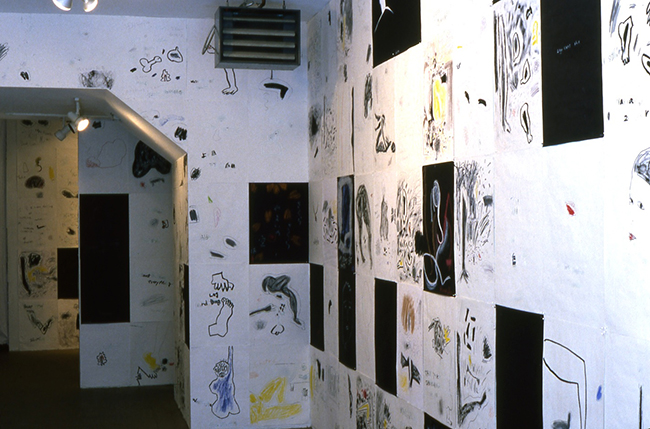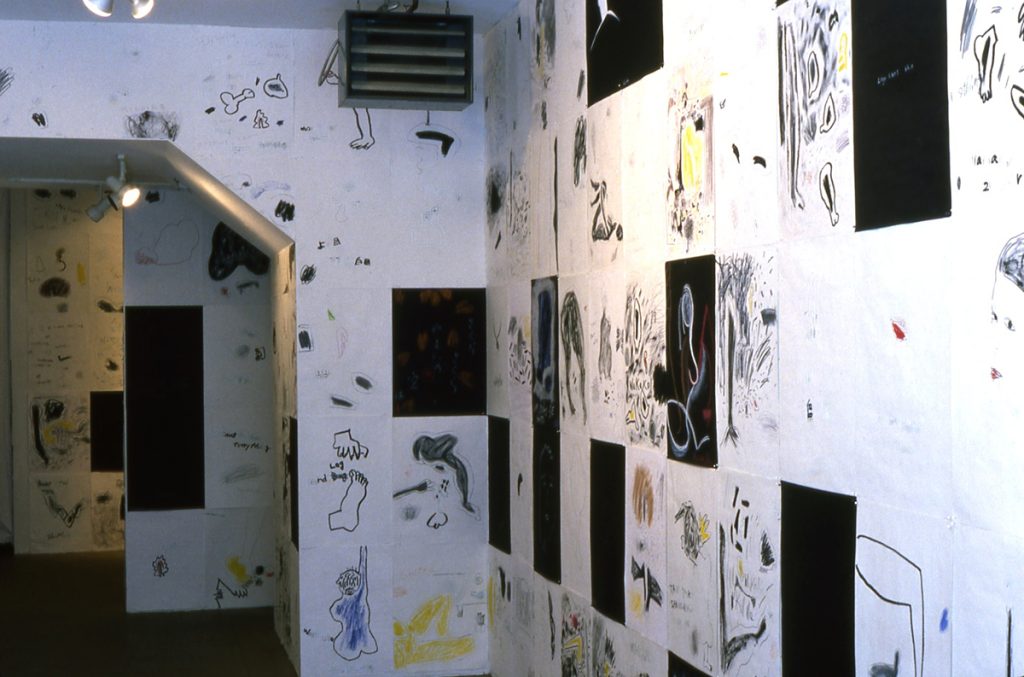Kiyomitsu Saito’s art has always been about searching for deeper truths. Born in Japan in 1948, he has spent decades unraveling the complexities of human existence through his work. From his early days exhibiting in Tokyo and Osaka to his bold leap to New York in 1990, Saito’s journey reflects an unwavering dedication to his craft. His signature piece, WORD-ROACH, embodies his fascination with how language and aesthetics shape our lives. Despite his move to the West, his Japanese heritage remains a vital part of his creative process, infusing his art with a rich interplay of Eastern philosophy and Western influences. His practice is both philosophical and confrontational, inviting others to step into the dialogue he builds between image, idea, and action.

The Work: “Explain for Interactive”
Saito’s project Explain for Interactive takes the act of drawing—one of the oldest and simplest forms of expression—and turns it into a stage for exchange. At its core, it is a conversation in line and paper. On white paper, Saito makes his own marks. On black paper, participants are asked to respond. The two images, different in tone and background, are then traded, compared, and allowed to merge into a shared space. It is not about perfection or technique. It is about tension and release, society and self, the collision of one will with another.
Participation is not passive here. The work insists that art is not a one-way transmission but a shared act of presence. The gesture of exchanging drawings suggests a mutual recognition, however temporary, between artist and participant. It is a direct challenge to the idea of art as something sealed, finished, and untouchable. Instead, Saito creates a space where both parties are implicated, where each line on paper becomes a trace of confrontation and collaboration.
The Foolish Drawing Concept
Saito’s own description—what he calls the foolish drawing concept—underscores this spirit. He frames life as a confrontation between society and the individual. Art, in his words, is a war waged on behalf of those who hunger for freedom. But wars wear people down. When exhaustion sets in, when people face helplessness, a new form of recognition arises: a sarcastic smile, a bitter truth, a clarity that reveals the ongoing struggle between the collective and the singular.
By calling it “foolish,” Saito acknowledges the absurdity of trying to capture such heavy themes with simple lines on paper. Yet that is the point. Foolishness becomes honesty. The foolish drawing disarms the grandiosity of theory and philosophy and replaces it with immediacy, with an awkward yet sincere human exchange. In that tension, Saito locates truth.
The Interactive Dimension
The structure of Explain for Interactive requires the presence of others. This is not an artist retreating into solitude. Instead, it is an artist inviting others into the arena of confrontation. The white paper drawing—his own contribution—meets the black paper drawing, created by someone else. The colors flip: white for origin, black for response. The participants exchange drawings, and through this swap, they step into each other’s place.
This act dismantles hierarchy. The artist is not the sole author; the participant is not a passive consumer. Both are bound in the same act of foolish creation. The shared drawings create a symbolic arena where individual voices clash, echo, and sometimes align.
The result is not polished or final. It is raw, sometimes awkward, sometimes humorous, often unpredictable. But in that uncertainty lies its power. Saito makes clear that art, when stripped to its essence, is not about objects but about relations—how one person’s mark meets another’s, how one self confronts another self through a shared surface.
Sarcasm, Truth, and Freedom
Saito’s work thrives on paradox. He sees art as both war and release. He recognizes the exhaustion that comes from endless confrontation, yet he also points to the possibility of truth emerging from it. The sarcastic smile he speaks of is not mockery but survival—a gesture that acknowledges both futility and courage.
In Explain for Interactive, sarcasm is embedded in the playful act of drawing. It is foolish, yes, but not meaningless. Each mark on paper is a record of resistance, a small declaration of individuality within the larger frame of society. Yet once exchanged, the mark belongs to someone else, altered by their perspective. Freedom here is not absolute; it is negotiated, fleeting, and fragile.
A Shared Space
Perhaps the most enduring aspect of Saito’s project is its insistence on shared space. The drawing exchange collapses the distance between artist and participant. It embodies his conviction that art should not be a solitary monument but a living act of confrontation, participation, and reflection.
By inviting others to step into his work, Saito reminds us that the struggle between society and the individual is not abstract. It is lived every day, in every exchange, in every compromise. The foolish drawing, in its simplicity, becomes a mirror of that struggle.
In the end, Explain for Interactive is not about finding solutions. It is about showing the clash, the war, the exhaustion, and the smile that comes after. It is about living with contradiction and turning that contradiction into art.

